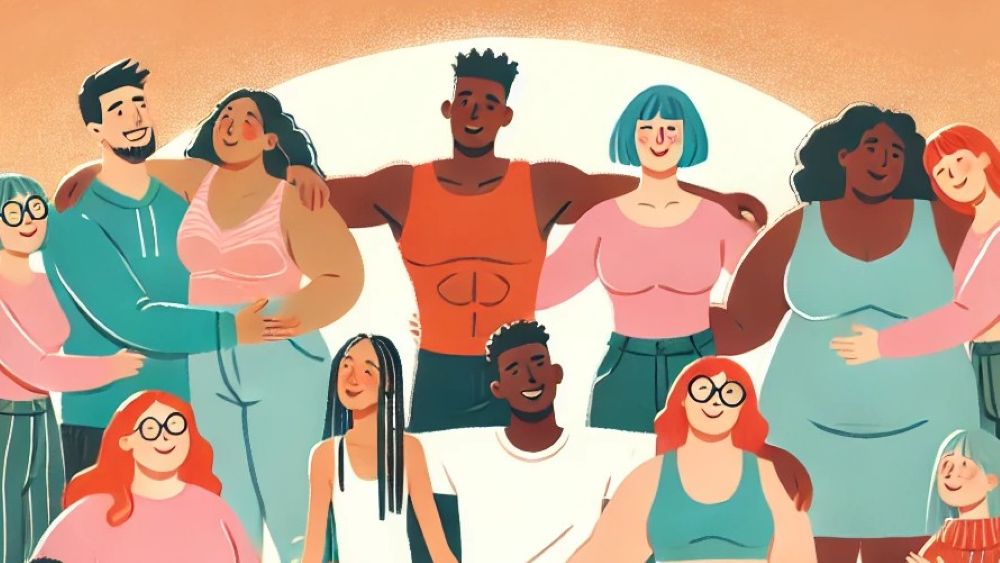From airbrushed magazine covers to meticulously curated social media feeds, it is no mystery that we are constantly exposed to unrealistic body standards. These standards dictate our self-image, leading to body dissatisfaction, and sometimes downright harmful behaviors. But where did these standards come from, and how can we break away from them? The journey to loving oneself is in recognizing how these ideals came to be, questioning their validity, and learning to establish our own definitions of beauty.
ORIGINS AND INFLUENCE OF UNREALISTIC STANDARDS
Ever since the very advent of civilization and society, body image issues have existed. Being perceived comes with judgment, and the bodies we occupy—our faces, body size, body shape, our clothes—are the very first thing people see and know of us, making them the subject of immediate judgment. So, it only makes sense that people have always had body image issues as they move through life.
From ancient times, when a plump figure signified that the man or woman occupying it had enough wealth to never go hungry, to our modern times, when a skinny figure implies that one can afford that Ozempic injection- our bodies signify much more than they are meant to. These shifting ideals demonstrate that beauty standards are ever-changing, yet society continues to impose rigid expectations.
These ideals are frequently driven by economic motives- be it through fashion, beauty or fitness industries- that exploit our insecurities. The fashion industry professes an unhealthy thinness, the beauty industry purveys cream for an ageless look, while the fitness industry often preys on fears of “imperfection”. We as consumers must demand inclusivity and representation from these industries as well as ethical accountability- instead of just blindly accepting what they have to say.
Social media often propels a distorted image of reality wherein the constant barrage of filtered pictures, edited videos and highlight reels present an unattainable ideal. The degree to which we scroll allows us to expose ourselves to these exaggerated versions of reality, and we subconsciously train our minds to perceive them as the norm. The more we see something, the more we believe it to be true. From a young age, we are constantly flooded with images of what the “ideal” body should look like- be it through advertisements, flicks, magazines, or influencers. These images develop an outlook on beauty that supports the detrimental point of view that our bodies must somehow fit a randomly set standard to be worth something!
HARMFUL EFFECTS OF UNREALISTIC STANDARDS
Having a perfect body is nothing more than a social construct that has changed a great deal over the centuries. Despite there being an ever-changing standard, we still tend to chase an impossible, exhausting dream. As Taylor Swift famously states, “Because if you’re thin enough, then you don’t have enough weight on you to have an ass, then your stomach isn’t flat enough. It’s all just impossible.”
The character of ‘Gloria’ portrayed by America Ferrera in the film Barbie brilliantly surmised today’s impossibly contradictory standards: “..you have to be thin but not too thin; you can never say you want to be thin. You have to say you want to be healthy, but also you have to BE thin.” All such contradiction puts us in a constant state of dissatisfaction whereby, no matter what we do, we will never feel we are doing enough to meet society’s expectations. Sometimes, unrealistic beauty will trip us into eating disorders, excessive dissecting, risky cosmetic procedures or simply, mindsets cultivated by a culture that sees worth through the lens of image. It is important to see these dangers to our mental health for what they are and find a healthier, more sustainable, and self-compassionate approach to health and wellness.
ROLE OF MEDIA IN SHAPING UNREALISTIC STANDARDS
There are many movies, TV programs, and advertisements that play an integral part in creating these beauty standards. Usually, in lead roles, only a limited range of body types are portrayed while plus-sized or unconventional bodies are either relegated to the sidelines or provided comic relief. This may uphold the theory that only a limited few body types are worthy of admiration and success.
EMBRACING A NEW STANDARD OF BEAUTY
A classic misconception is the idea that self-love and health cannot co-exist. In reality, self-acceptance does not equate with the denial of health, nor does prioritizing health mean conforming to inflexible beauty ideals. A balanced perspective takes into account that bodies come in all sizes and shapes and should be approached accordingly in health pursuits, rather than adhering to such concepts as extreme dieting and cosmetic enhancements.
One of our therapists said, “You do not experience your body image issues in your body, you experience them in your mind, so change your mindset before changing your body.” This speaks of changing the focus inward. True healing starts when we work on how we view ourselves instead of endlessly trying to change our bodies to fit an impossible position. Low self-esteem, anxiety, and depression have all been linked to poor body image, which strengthens the case for body dissatisfaction being a mental struggle rather than a physical one.
Unlearning unattainable body ideals takes constant effort. It means questioning what we consume, paying attention to the things we say to ourselves, and accepting body diversity. Real self-acceptance is not about conforming to an ideal; it’s about celebrating our bodies for what they’re capable of rather than how they look.
CONCLUSION
The journey into self-love is an ongoing one. One begins by rejecting the impossible standards assigned to us. An internal shift in our mind, some positive self-talk along with the support of movements that challenge aspects of what society thinks is normal, can allow us to heal and learn to embrace our bodies- flaws and all. It’s time to rewrite the standards of beauty on our terms. We do have the power to be free from unrealistic body standards: it is a matter of unlearning, questioning, and ultimately accepting ourselves!

